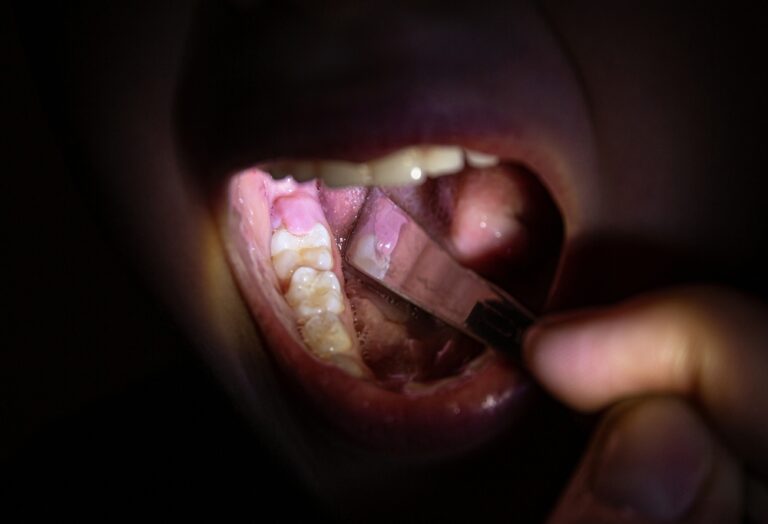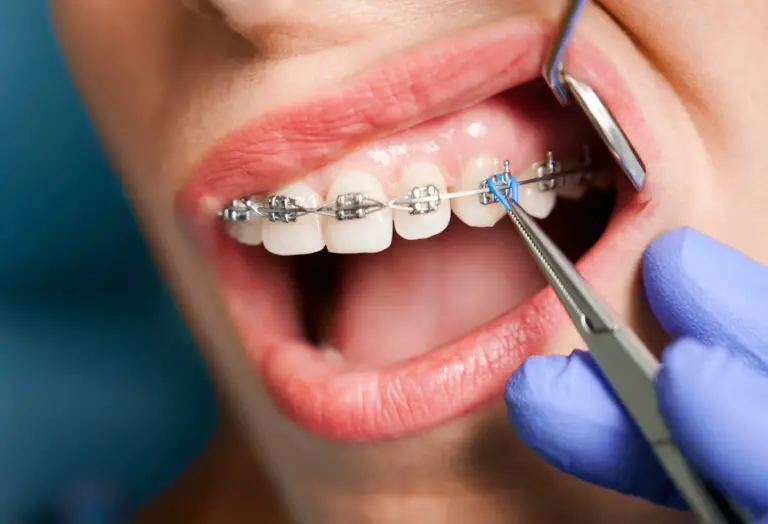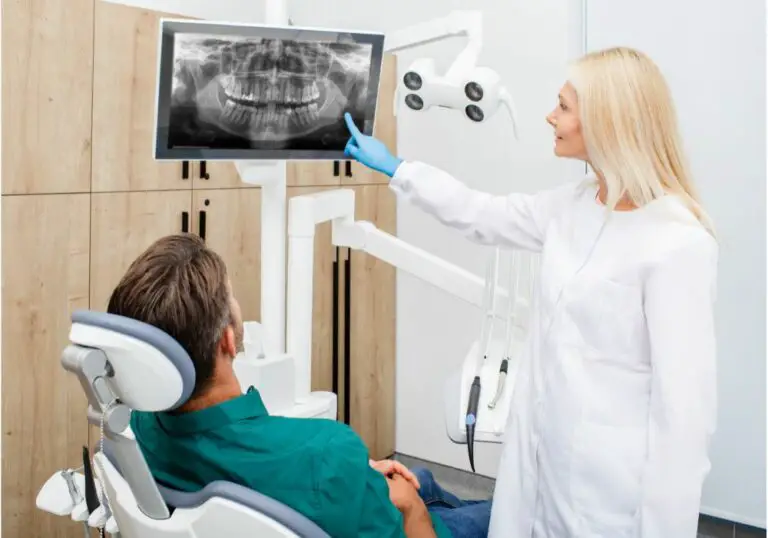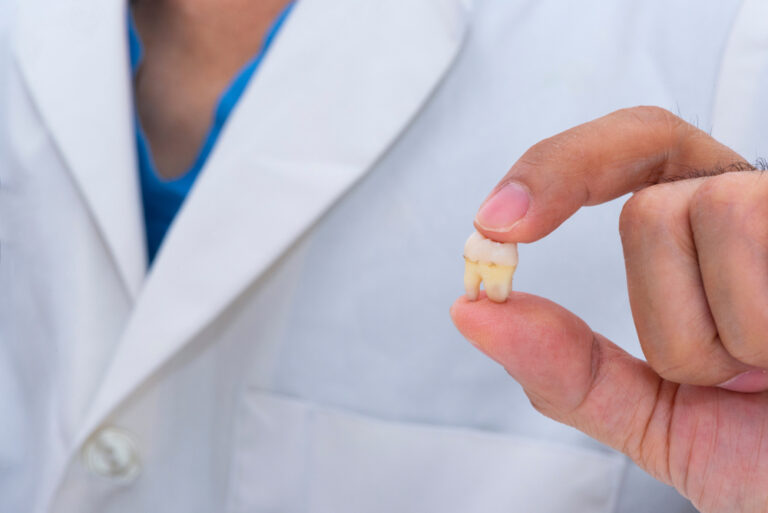What exactly is gum overgrowth?
Gum overgrowth, also referred to as gingival overgrowth or gingival hyperplasia in medical terminology, is a condition where the gingival (gum) tissue surrounding the teeth becomes enlarged, swollen, or overgrown. This can lead to the gums expanding outward and starting to overlap or completely cover the teeth.
In normal healthy gums, the gum tissue tightly hugs the base of the teeth and fills the small space between the tooth crown and the bone, known as the gingival sulcus. This creates a shallow pocket around each tooth of approximately 1-3 millimeters deep.
With gum overgrowth, this space becomes exaggerated as the gum swells and balloons out. The depth of the gum pocket increases, and the gum may bulge out over the biting edge of the teeth. In mild cases, there is only partial coverage of the tooth crown. But in advanced severe overgrowth, the gums can envelop the entire tooth, making it appear shorter, smaller or even hidden completely.
The gum tissue can become enlarged localized to just one tooth area or generalized around multiple teeth. Gum overgrowth ranges from mild enlargement of 1-2 millimeters to severe overgrowth covering several millimeters of the tooth and even extending over the biting edges.
Why does this gum swelling happen?
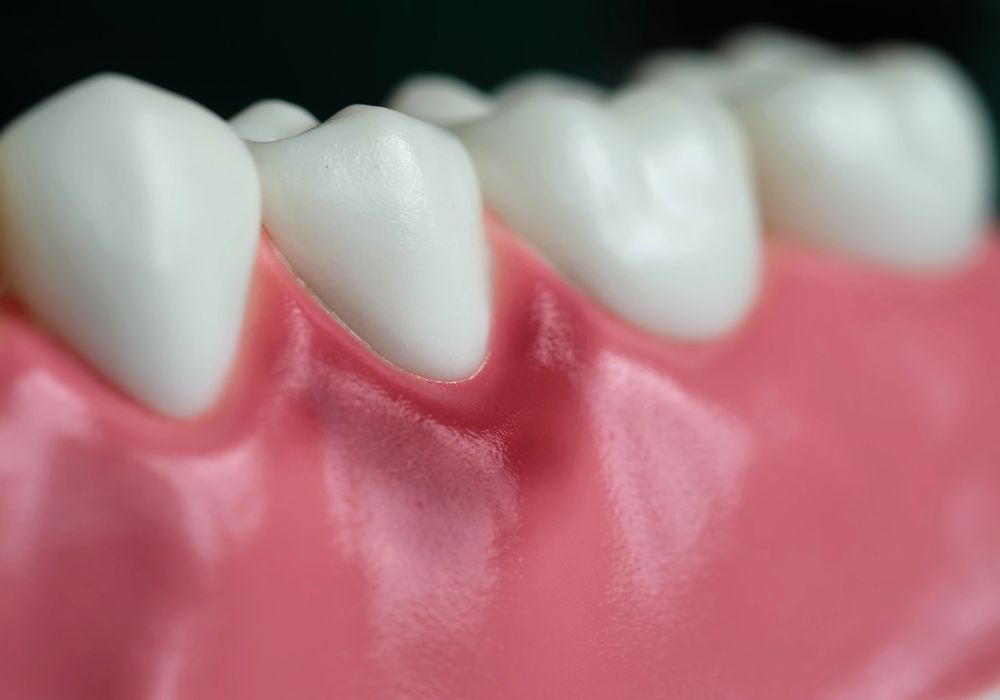
The gum tissue is dynamic and can be influenced by many different factors. There are several potential causative factors that promote gum overgrowth:
Side effects of medications
One of the most common causes of significant gum overgrowth is side effects from certain prescription medications:
- Calcium channel blockers: Used extensively to treat high blood pressure and heart conditions. Examples are nifedipine, amlodipine, and diltiazem. Around 30% of patients on these drugs show gum overgrowth.
- Immunosuppressant drugs: Prescribed to prevent organ rejection after transplants and autoimmune disorders. These include cyclosporine and tacrolimus. They affect the gums in about 25% of people.
- Some anticonvulsants: Such as phenytoin used to prevent seizures. Roughly 50% of users demonstrate overgrown gums.
- Oral contraceptives: The hormones in birth control pills can exacerbate gum tissue growth in some women.
The precise mechanisms are not fully understood but likely involve these drugs causing increased inflammation, fluid shifts, and changes in cellular activity that prompt excess gum cell and tissue production. This medication-induced gingival hyperplasia tends to develop within the first 3-6 months after starting treatment. The degree of gum enlargement is somewhat dose-dependent.
Hormonal fluctuations
Hormone levels that rise and fall naturally at certain life stages can also influence gum overgrowth:
- Puberty: The surge of androgen hormones during adolescence.
- Menstruation cycle: Estrogen and progesterone levels peak and dip monthly.
- Pregnancy: Hormones such as estrogen and progesterone are elevated for months.
Research indicates hormones likely increase inflammation and exaggerate vascular changes in gum tissue. These hormonal fluctuations during adolescence, menstruation, and pregnancy seem to spur a low level of gum overgrowth in some women. The specific mechanisms are still being investigated.
Genetic and rare disorders
There are some rare genetic conditions that predispose patients to severe gum overgrowth:
- Hereditary gingival fibromatosis: An autosomal dominant disorder causing excess fibroblasts in gums. Begins around age 2.
- Juvenile hyaline fibromatosis: Onset typically before age 5, causes abnormal growths and osteolytic bone lesions.
Both these disorders can lead to substantial gum overgrowth that is disfiguring and impacts dental health. Other genetic diseases associated with gum overenlargement include Murray-Puretic-Drescher syndrome and Rutherford syndrome.
Oral health and dental factors
Poor oral hygiene and dental problems can also contribute to gum swelling:
- Insufficient oral hygiene: Allows plaque and tartar to build up along the gumline, instigating inflammation, irritation, and swelling.
- Crowded, misaligned teeth: Crooked teeth or dental crowding makes plaque removal difficult. Food and debris get trapped, irritating the gums.
- Aggressive tooth brushing: Excess pressure and abrasion during brushing can traumatize the gums.
- Existing gum disease: Swelling from pre-existing gingivitis or periodontitis.
These dental issues lead to bacterial accumulation along the gum margin, provoking chronic inflammation and fluid buildup. The gums redden and become engorged.
What does gum overgrowth look and feel like?
There are several classic signs and symptoms of gum overgrowth. These manifest slowly, with changes often starting gradually and worsening over time.
- Puffy, enlarged gums – Gums appear swollen and thicker, especially in between teeth. They have a puffy look compared to normal gums.
- Gum tissue covers teeth – Healthy gums tightly hug the base of teeth. In gum overgrowth, gums expand outward and begin overlapping the teeth. They may partially or fully cover teeth.
- Increased spacing between teeth – Swelling gums can push teeth apart, creating widened gaps between teeth. This gives the appearance of teeth shifting position.
- Altered tooth orientation – In severe overgrowth, the bulky gum can push teeth out of their normal upright position, causing a crooked appearance.
- Bleeding and tender gums – The inflamed enlarged tissue is vulnerable to bleeding when brushing. It may be painful and tender to touch.
- Bad breath – The enlarged gum pockets from overgrowth allow more plaque and bacteria accumulation, causing halitosis.
- Problems eating and speaking – Extensive overgrown gum tissue gets in the way of normal chewing and speech.
- Gum recession – In some cases, exposed root surfaces are visible as gums adjacent to the overgrown areas recede.
These symptoms often start slowly and incrementally get more noticeable. Seeking treatment early provides the best chance of reversing the process before major overgrowth.
What problems can overgrown gums cause?
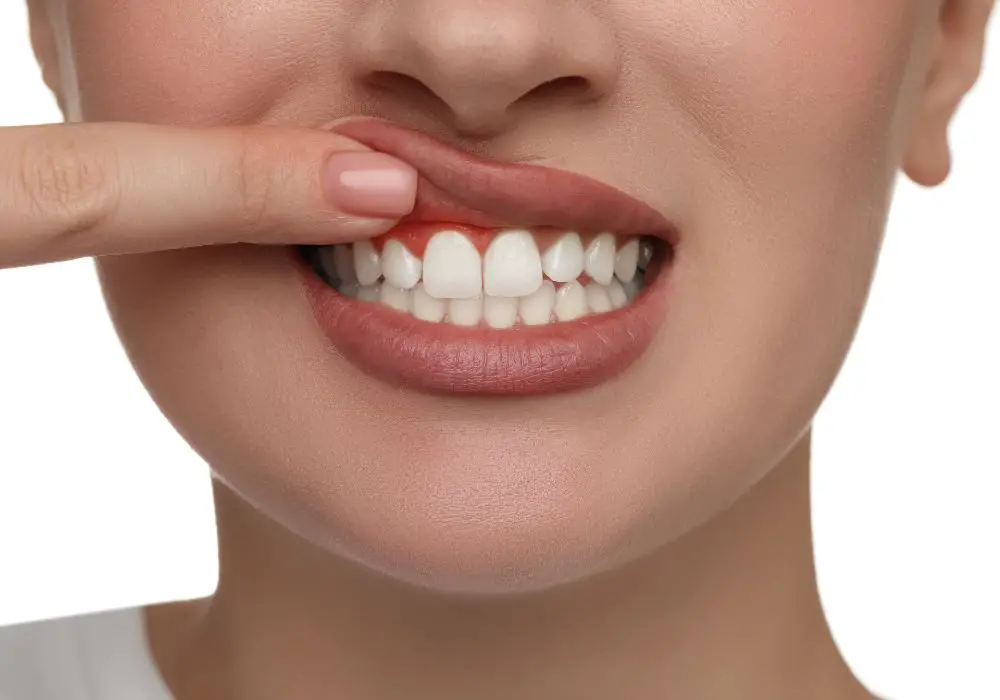
If gum overgrowth continues unchecked and untreated, it can spark additional oral health issues:
- Tooth decay – The enlarged pockets and tissue covering teeth allow more plaque buildup in hard-to-clean areas, increasing decay.
- Gum disease – Ongoing bacterial infiltration under the swollen gums may worsen to severe infections called periodontitis.
- Tooth loosening – The swelling gums themselves can push teeth out of position in their sockets, leading to mobility.
- Tooth loss – In advanced cases, the excessive disproportionate gums chronically loosening teeth may lead to tooth extractions.
- Bite and alignment problems – The added gingival bulk can shift teeth out of their expected arrangement, altering the bite.
- Bone loss – Chronic inflammatory stimulation can cause bone resorption and loss under the gumline.
- Airway issues – If swelling is extensive, the enlarged gums can obstruct airflow, potentially worsen sleep apnea.
- Low self-esteem – Significant gum overgrowth may be unsightly and embarrassing, taking a psychological toll.
Seeking prompt treatment helps avoid these types of complications and consequences.
When should someone see a dentist?
You should make an appointment to see your dentist promptly if you notice any of the following:
- Gum swelling or puffiness in one area or generalized around multiple teeth
- Gums beginning to cover over your teeth, even partially
- Increased spaces opening up between your teeth
- Teeth appearing shifted or crooked
- Bleeding from gums after brushing
- Gum soreness and tenderness
- Tooth sensitivity or looseness
- Bad breath or putrid taste in your mouth
- Recently started a new medication known to cause gingival hyperplasia
- Have a family history or genetic disorder associated with excess gum tissue
Bringing up any gum changes at your regular 6 month dental checkups is also recommended to keep your dentist informed. Early intervention provides the greatest chance of reversing gum overgrowth before extensive progression.
How do dentists determine if someone has gum overgrowth?
To thoroughly evaluate potential gum overgrowth, the dentist will:
- Do a clinical oral examination looking closely at the gums for signs of enlargement, swelling, or crowding of the teeth.
- Check for visual signs like puffiness, changes in contour, increased tooth spacing, or gum tissue covering teeth.
- Palpate the gums to feel for increased firmness and measure pocket depths.
- Assess for bleeding, tenderness, recession.
- Note any shifts in tooth positioning or evidence of bite changes.
- Take dental x-rays to look for bone levels and check the health of underlying bone.
- Review medical and prescription history for medications that cause gingival hyperplasia.
Measuring pocket depths around each tooth helps quantify the degree of overgrowth. Mild cases demonstrate pockets of 4-5 mm depth, while severe cases have 7mm or deeper pockets.
These clinical and radiographic findings help confirm the diagnosis and severity of gum overgrowth to guide treatment approaches.
What are the treatment options for gum overgrowth?
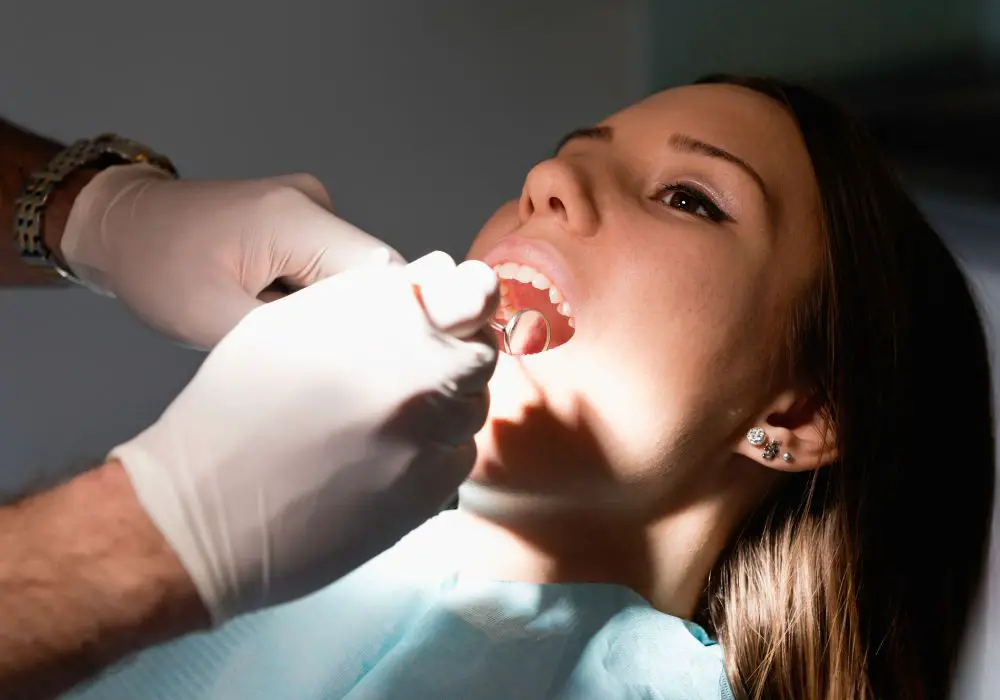
The main goals of treatment are to reduce excess gum tissue, restore normal gum contours, address any secondary effects on the teeth and bite, and prevent recurrence.
Depending on the severity and cause, gum overgrowth is managed by a combination of:
- Improved oral hygiene – More frequent and meticulous brushing and flossing helps disrupt plaque accumulation and gingival inflammation that exacerbate swelling.
- Gum surgery – The definitive treatment is to surgically remove the overgrown gum tissue down to normal contours, called gingivectomy. Sometimes laser ablation is used.
- Medication changes – If drug side effects are causing the overgrowth, the physician may prescribe a substitute medication or lower dosage.
- Periodontal therapy – Further gum treatments like deep cleanings and antibiotics if gum disease is also present.
- Orthodontics – Braces or other appliances may be needed to reposition teeth shifted out of place by the gum overgrowth.
- Ongoing monitoring – Follow up visits to monitor for signs of recurrence and quickly treat any areas.
In general, the more minimal cases may be managed with oral hygiene and medication changes if applicable. But moderate to severe overgrowth usually requires surgical reduction as the primary and initial mode of therapy.
Can gum overgrowth be safely prevented?
There are some proactive steps you can take to help prevent gum overgrowth from developing or recurring:
- Maintain meticulous oral hygiene with twice daily brushing, daily flossing, and routine cleanings every 6 months. This disrupts plaque accumulation along the gumline.
- Use a soft bristled toothbrush and brush gently without excess pressure to avoid gum irritation.
- Keep up with regular dental exams and mention any gum changes or swelling you notice.
- Use an antiseptic mouthwash to reduce bacteria levels.
- If taking medications associated with gingival hyperplasia, discuss options like lower dosages or alternative drugs with your physician.
- Stop smoking and tobacco use, which exacerbate gum inflammation.
- Have any misaligned teeth corrected with orthodontics to avoid gum irritation.
- Follow a very soft diet if you already have areas of swollen gums to avoid trauma.
With diligence, gum overgrowth can often be averted from progressing or recurring after treatment. But some individuals may still be predisposed genetically.
What is the long-term outlook for gum overgrowth?
The prognosis for gum overgrowth is generally positive, especially when caught and treated early.
With proper oral hygiene and professional treatment like gum reduction surgery, the majority of cases can be successfully controlled and reversed before extensive permanent changes occur. Mild gingival overgrowth may resolve fully when irritating factors like medications are removed and oral hygiene is improved.
More significant cases that require surgical reduction may necessitate periodic follow up procedures or touch up treatment in areas where the gums begin swelling again. This maintenance therapy is necessary for some individuals to keep the condition in check.
However, severe long-standing overgrowth can sometimes cause irreversible changes like permanent loosening or loss of teeth, bone loss, or substantial bite issues requiring orthodontics or restorative treatments. That highlights the importance of early detection and treatment of gum overgrowth.
Overall though, compliance with therapy and taking preventive steps helps to limit recurrence and retain dental function in most patients contending with gum overgrowth.
Frequently Asked Questions
Q: What does gum overgrowth typically look like?
A: The enlarged swollen gums have a puffy, inflamed appearance and are visibly thicker than adjacent gum areas. In mild cases, the gums are enlarged but don’t fully cover teeth. Moderate to severe overgrowth shows gums expanding outward from the base of teeth and covering over them partially or sometimes fully.
Q: Will gum overgrowth resolve spontaneously without treatment?
A: Existing gum overgrowth is unlikely to completely resolve on its own without professional treatment. While excellent oral hygiene may help slow progression, the swollen enlarged gums generally require gum reduction surgery and possibly other treatments to fully correct the condition.
Q: What methods are used to treat severe gum overgrowth?
A: Severe gingival hyperplasia needs to be treated aggressively to reduce the excessive gum tissue. The primary treatment is surgical removal or reduction of the overgrown gum sections down to normal contours, called gingivectomy. This may be preceded by antibiotics or antimicrobial rinses if substantial inflammation is present. Ongoing monitoring and potential orthodontic treatment may be needed after gum reduction.
Q: When do overgrown gums absolutely require surgery?
A: Mild cases may sometimes be managed non-surgically with improved oral hygiene and medication changes if applicable. But moderate to severe gum overgrowth will very likely require surgical reduction or removal of the enlarged gum sections at some point to fully correct the condition and prevent complications. The degree of gingival enlargement can only be minimized so much without surgery.
Q: Is it possible to shrink gum overgrowth naturally?
A: Some natural approaches like antiseptic mouth rinses, green tea compounds, or vitamins may mildly help reduce gum inflammation that worsens swelling. However, existing substantial overgrowth generally cannot be fully reversed or shrunk through natural remedies alone. While useful as supplemental therapy, surgical gum reduction is still required for significant resolution.

